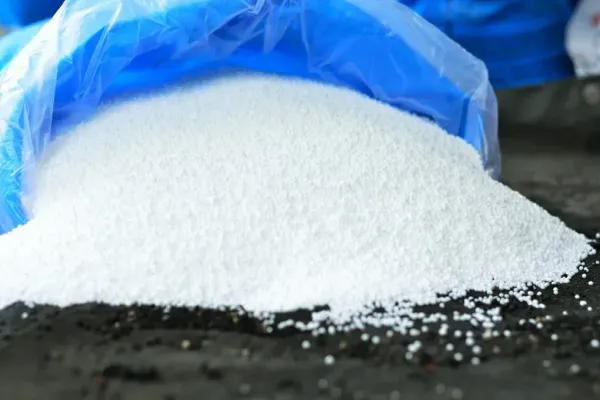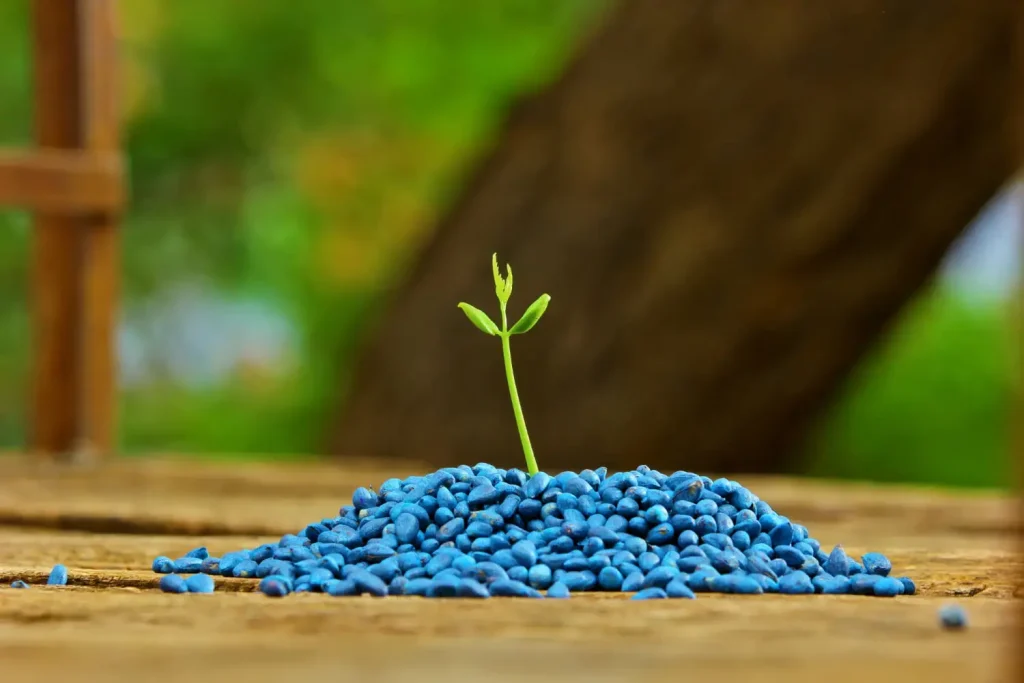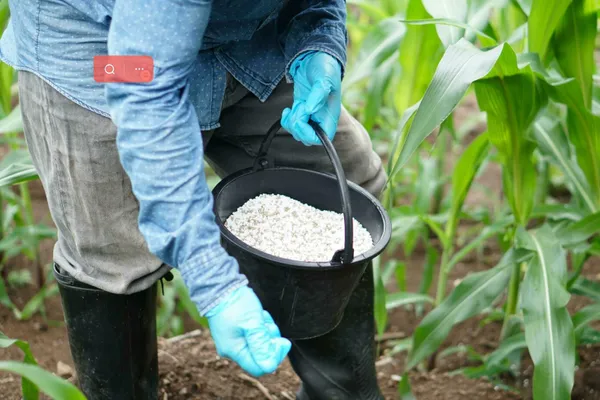Avoid your inquiry is delay response, please enter your WhatsApp/Skype along with the message, so we can contact you at the very first time.
We will reply you within 24 hours. If for urgent case, please add WhatsApp/WeChat:
Warning: Undefined variable $public in /www/wwwroot/lvfertilizer.com/wp-content/themes/hyhadmin/header.php on line 350
Warning: Trying to access array offset on value of type null in /www/wwwroot/lvfertilizer.com/wp-content/themes/hyhadmin/header.php on line 350
,. Or call
Warning: Undefined variable $public in /www/wwwroot/lvfertilizer.com/wp-content/themes/hyhadmin/header.php on line 350
Warning: Trying to access array offset on value of type null in /www/wwwroot/lvfertilizer.com/wp-content/themes/hyhadmin/header.php on line 350
directly.
Many farmers want one simple fertilizer that brings strong crops, but they face high prices, weak soils, and confusing choices. When the wrong fertiliser or rate is used, yields suffer and money is wasted. This guide explains the real “king of fertilizers” and how to use it wisely.
The king of fertilizer is urea, a nitrogen fertilizer with the grade 46-0-0. It is the most common nitrogenous fertiliser in the world because it is cheap per unit nitrogen, easy to move and store, and very effective when used in a balanced program with NPK and other fertilizers.
Note: We are a leading manufacturer and exporter of high-quality fertilizer products based in China. We design NPK, ammonium sulfate and specialty fertiliser that work together with locally sourced urea in many countries.
On the ground, many farmers in the world talk about fertilizers as if they are “food”. Urea and other products are taken as food for plants, because they feed crops with the nutrients plants need to grow well. People often say food for plants since fertilizer brings energy to the field.
Over time, farmers began to know urea as a fertilizer that gives fast, visible results. After a good rain, pale leaves turn dark green, stems grow thicker, and leafy growth improves. In many villages there is almost no one in the world who do not know the white, round granules of urea that come in 50 kg bags.
Because of this strong, quick effect, urea is often called the king of fertilizers. It is not the only important fertilizer, but it is the one most people remember first when they talk about “strong” fertiliser.

Urea Fertilizer (46% Nitrogen)
Scientifically, urea (also called carbamide) is a small organic compound that is very rich in nitrogen. Urea contains about 46% nitrogen by weight, so the standard grade is written as 46-0-0. This very high nitrogen content makes it a highly concentrated form of nitrogen fertilizer compared to many other products.
Because urea packs so much nitrogen into a small volume, it is easy to transport and store. One truck of urea can carry much more nitrogen than a truck of lower-grade fertilizer. This is one of the main reasons urea is widely used and why people in many countries call it the king of fertilizers.
In simple terms, urea fits the needs of many buyers:
Because of this, urea has become central to modern crop production and agricultural production systems.
When urea is applied and applied to the soil, it does not stay as urea for long. First, urea is dissolved by rain, dew or irrigation water. In this step it becomes soluble in water and moves a little below the soil surface.
Then a natural enzyme called urease starts a key chemical reaction. The urea molecule absorbs water and is split into ammonium carbonate. Scientists call this process hydrolysis.
The reaction can be summed up simply:
This ammonium is the first plant-ready applications of nitrogen. Later, soil microbes turn some of it into nitrate. Together, ammonium and nitrate are the main forms of nitrogen that roots use for plant growth.
Because this change is fast, urea should be applied when soil is moist or when rain or watering is expected soon. If it stays dry and exposed, more nitrogen is lost to the air as ammonia gas, especially on high-pH soils.
Many people are confused when they hear that urea is an organic molecule. It contains carbon, hydrogen, oxygen and nitrogen, so in chemistry it is indeed an organic compound. Urea is naturally produced in the bodies of humans and animals as a safe way to remove extra nitrogen.
In industry, however, urea is manufactured as a mineral fertiliser. Factories synthesize synthetic urea by reacting ammonia and carbon dioxide at high temperature and pressure. This process, sometimes called the Bosch-Meiser route, turns these gases into urea granules and prills.
So in farming language, urea is treated as an inorganic chemical fertilizer, not as organic fertilizer. It belongs to the family of nitrogenous fertilizers that also includes ammonium sulfate and ammonium nitrate. Organic farming rules in many countries do not allow urea, but some mixed systems use both mineral and organic inputs.
During the Green Revolution, scientists developed the development of high-yielding cereal varieties and combined them with better use of fertilizers, improved water control and pest management. Nitrogen and phosphorus fertilizer use rose quickly in many regions.
Since urea became cheap and widely available, it has played a major role in lifting crop yields. Studies suggest that synthetic fertilizer, especially nitrogen, now supports roughly half of global world food production.
At the same time, fertilizer is increasing in cost and can harm the environment if used badly. Modern policy now pushes for smarter, more efficient applications of nitrogen that protect both yield and soil health. This is where balanced NPK fertilizer, organic inputs and better management all work together.

NPK Fertilizer?
Urea is only one form of nitrogen fertilizer. Others include ammonium nitrate, ammonium sulfate and different NPK blends. Each has its own behavior in the soil and its own risks and benefits.
Quick comparison:
| Fertilizer type | Typical grade | Main role | Notes |
| Urea | 46-0-0 | Strong nitrogen boost | Very concentrated, needs care |
| Ammonium sulfate | 21-0-0-24S | N + sulfur for special soils | Slightly acidifies soil |
| Ammonium nitrate | 34-0-0 | Fast-acting nitrogen | Strictly regulated in many countries |
| Compound NPK | e.g. 15-15-15 | Base dressing with N, P, K together | Good for balanced nutrition |
Urea gives the biggest nitrogen “punch”, but its quick hydrolysis can cause losses if timing is wrong. Ammonium sulfate helps when sulfur is low. Compound NPK fertilizer gives a more complete nutrient package and is often used together with urea.
From our experience as a Chinese fertilizer manufacturer, many clients use urea only for topdressing, while our NPK products form the base of their nutrition program. In this way, urea stays the king of fertilizers, but NPK and other products act as the “team behind the king”.
Good timing and placement are key. For most crops, the best time of sowing strategy is:
Practical tips:
When farmers apply in their agricultural fields with this method, urea becomes a safe, efficient tool. It is still strong, but it is controlled. This style of use of fertilizers helps support stable crop production without wasting money.
You can think of it this way: giving your plants nitrogen at the right time is like serving a meal when they are hungry, not when they are already full or still sleeping.

When and How Should Urea Be Applied to the Soil?
No single product can do everything. Fertilizers provide nitrogen, phosphorus, potassium and other nutrients in different ratios. Plants need all three major elements plus secondary and trace nutrients.
Here is a simple way to think about it:
In mixed systems, fertilizer is taken as food for plants in more than one form. Farmers look for a fertilizer that they can apply easily and safely. For many partners, that means combining local urea with imported NPK, micronutrient blends and sometimes organic fertilizer. This mix works well even in tough conditions like urea in Nepal (urea in nepal) or in dryland regions.
Used this way, urea stays the source of nitrogen; NPK adds phosphate and potash; organic inputs protect structure and biology. This balanced approach supports healthy plant growth and long-term soil fertility, rather than short bursts that cause many negative consequences later.
While urea is powerful, fertilizers should not be taken as magic tools for every problem. Too much nitrogen, or poor timing, can cause:
Sometimes fertilizer is increasing yields only up to a point; beyond that, extra bags bring little gain but bigger risk. Plants since it has many needs will not respond if water, light or other nutrients are limiting. In these cases, extra urea simply adds cost and harm.
In farmer training, we stress that urea and other fertilisers are powerful tools but must be matched to real need. Many farmers in the world now understand this, yet there are still some in the world who do not know how quickly damage can appear when rates are too high.
As a leading manufacturer and exporter of fertilizer in China, our main job is not to sell urea. Instead, we focus on:
Our customers include agricultural distributors & importers, large farms and cooperatives, government projects, and NGOs in many regions, from Asia to Africa to markets that import urea in bulk, such as projects using urea in Nepal or in East Africa.
Many of them already receive urea with a government subsidy, but they lack reliable NPK and specialty products. We help them design complete programs, select fertilizers that they can apply in local systems, and train field staff on safe handling, proper applications of nitrogen, and realistic yield targets.
If you are building your own fertiliser brand, we can also synthesize custom formulas and packaging lines under OEM agreements, so you can combine local urea with our products in one clear, trusted offer to farmers.
Urea fertilizer is a white, crystalline solid used mainly as a nitrogen fertilizer. Its typical grade is 46-0-0, which means 46% nitrogen, 0% phosphorus and 0% potassium. It is one of the most common nitrogen sources in the world for both crops and animal feed (in special rations).
Urea is called the king of fertilizers because it has very high nitrogen content and is cheap per unit nitrogen. It is also easy to transport, handle and use on many crops and land types. For these reasons, urea is one of the most widely used nitrogen fertilizers globally and has become central to modern farming. (
In modern plants, urea is manufactured by reacting ammonia (NH₃) and carbon dioxide (CO₂). This creates an intermediate that is turned into synthetic urea granules. The product is then cooled, screened and stored ready for export. Around 80% of global ammonia output goes into urea production.
Used at the right rate, urea can support strong yields without harming soil structure. Problems come when doses are too high or timing is poor, which can cause pH spikes near the prills, gas losses and leaching. Mixing urea with balanced NPK fertilizer and some organic fertilizer helps protect soil health.
It is not wise to rely only on urea. Urea supplies nitrogen, but no phosphorus or potassium. Most systems need a mix of N, P and K, plus secondary and trace elements. In practice, urea is usually used with NPK blends, manures and other inputs so that fertilizers provide a full nutrient package.
Because urea shapes almost every fertiliser decision in the field. Even though we do not produce urea, we must help our partners understand it, so they can combine local urea with our NPK and specialty products. In this way, we support safe, efficient use of fertilizers across many countries and crops.